Plywood is a ubiquitous material that plays a pivotal role in bringing creative ideas to life. Often referred to as the “workhorse” of the industry, it is the unsung hero behind countless projects, offering a perfect balance of strength, durability, and affordability. However, it isn’t a one-size-fits-all solution; it comes in a wide array of types, each tailored to specific applications and preferences.
In this comprehensive guide, we will actively explore different types of plywood, categorized by their grades, ply composition, and materials. By delving into the specifics of each category, you’ll gain valuable insights into their unique characteristics and ideal uses.
Types of Ply
Single Ply
This single-layered sheet of ply best suits temporary, non-structural applications and finds common use in packaging and the creation of temporary partition walls.
Three-Ply
With three layers, three-ply is ideal for lightweight applications such as furniture and decorative panels in interior design projects.
Five-Ply
With five layers, this type provides enhanced strength and stability making, it an excellent choice for cabinetmaking, shelving, and general construction.
Seven-Ply
It offers even greater strength and resistance to warping. Its enhanced strength and resistance to warping make it suitable for structural applications like subflooring and roof sheathing.
Nine-Ply
This is among the strongest types of ply, thanks to its nine layers. It’s ideal for heavy-duty applications like load-bearing walls and beams.
Plywood Types Based on Different Grades
A-Grade
A-grade is of the highest quality and is free from surface defects. It’s suitable for applications where aesthetics matter, such as high-end cabinetry and furniture.
B-Grade
B-grade may have some surface defects but is still a good choice for projects where appearance is important, but perfection isn’t a strict requirement.
C-Grade
C-grade may contain more noticeable defects but is structurally sound. It’s commonly used in sheathing and other applications where appearance is less critical.
D-Grade
D-grade, with its visible defects, finds its best use in applications where appearance is not a concern, such as in subflooring and roofing.
X-Grade
Designed for exterior use, X-grade plywood can withstand exposure to the elements and is a top choice for outdoor construction projects like roofing and siding.
Types of Plywood Based on Material Used
1. Softwood
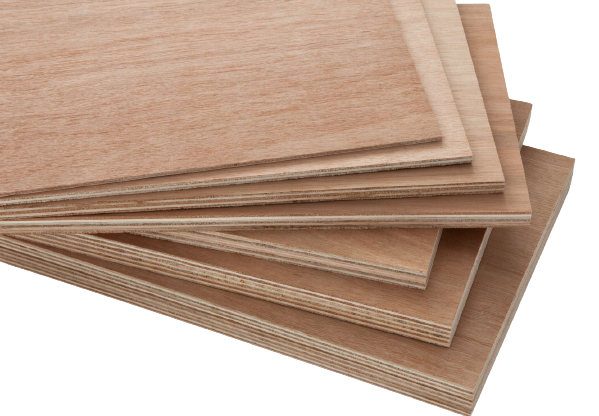
Typically crafted from coniferous trees like pine, cedar, or fir, softwood plywood is a popular choice for structural applications due to its strength and cost-effectiveness. Additionally, it is commonly used for sheathing, subflooring, and roofing, with higher grades indicating fewer imperfections.
2. Hardwood

It is crafted from hardwood trees such as oak, birch, or cherry. This type of plywood is prized for its aesthetic appeal and is often used in furniture & cabinetry. It’s available in various finishes, including veneer, laminated, and UV-coated options, making it a versatile choice for interior projects.
3. Marine Plywood

It is designed to withstand moisture and is perfect for applications exposed to water. It is bonded with waterproof adhesive and is typically made from hardwood or tropical wood species. Boat construction, outdoor furniture, and bathroom cabinets are common uses for marine plywood.
4. Exterior Plywood
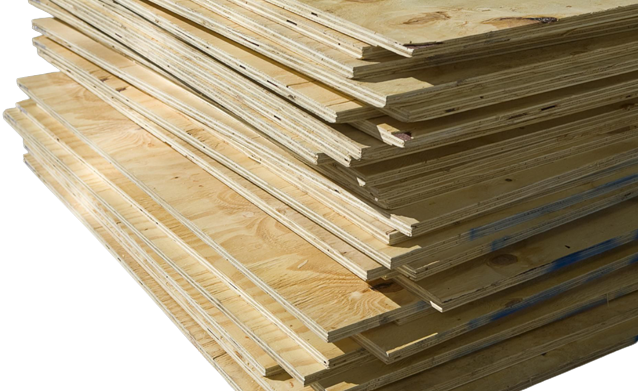
Treated to resist moisture and decay, exterior plywood is suitable for outdoor applications and is often used in construction for sheathing roofing, and exterior cladding. The use of waterproof glues and preservatives enhances the overall durability.
5. Interior Plywood
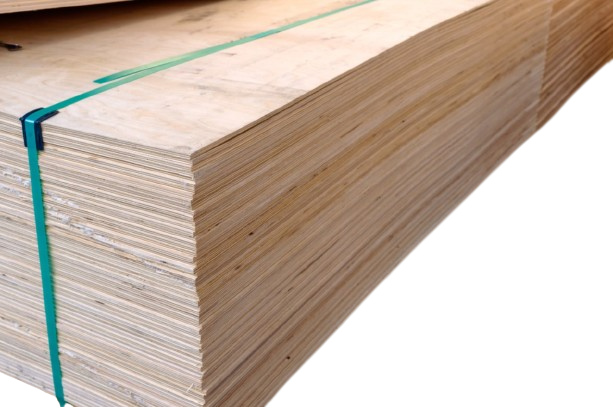
Interior plywood is not as resilient as exterior or marine plywood and is intended for indoor use. It is often used for furniture, cabinets, and decorative paneling. While it is not suitable for outdoor applications, it offers various finish options for interior design projects.
6. Structural
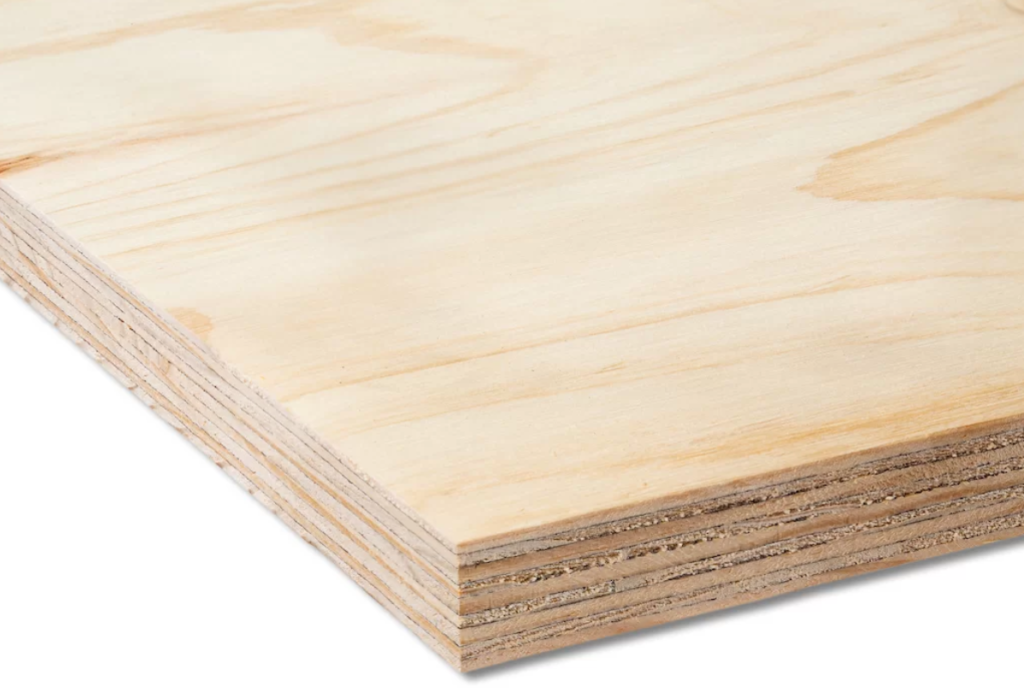
Engineered for heavy-duty applications, structural plywood meets specific performance standards, commonly utilized for beams, posts, and load-bearing walls. It is available in various thicknesses and graded based on its strength, making it an essential component for maintaining structural integrity.
7. Particleboard Core

Particle Board consists of a core made from compressed wood particles, which is then sandwiched between layers of veneer. It’s a cost-effective option for furniture and cabinet construction but is not as sturdy as plywood with a solid wood core.
8. MDF Core Plywood
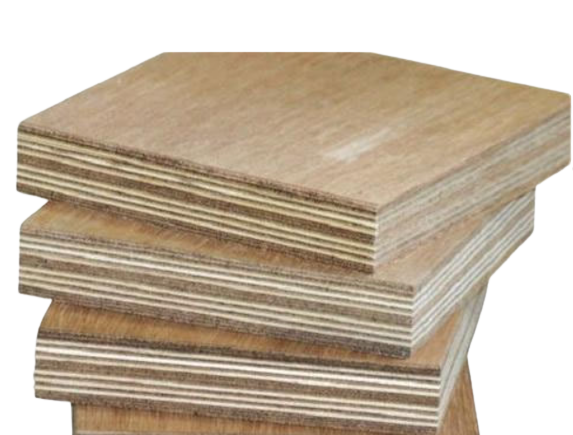
MDF core uses a core made of medium-density fiberboard (MDF), providing a smooth and consistent surface. It is often used for furniture and cabinet making due to its excellent surface for painting and veneering.
9. Fire-Rated Plywood
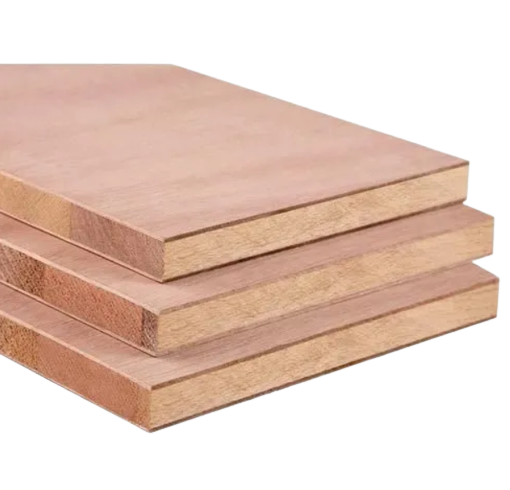
Designed to resist fire for a specified period, fire-rated plywood is suitable for applications where fire safety is a concern, particularly in commercial buildings. It features a fire-resistant coating and is graded based on its fire-resistance capabilities.
10. Treated Plywood
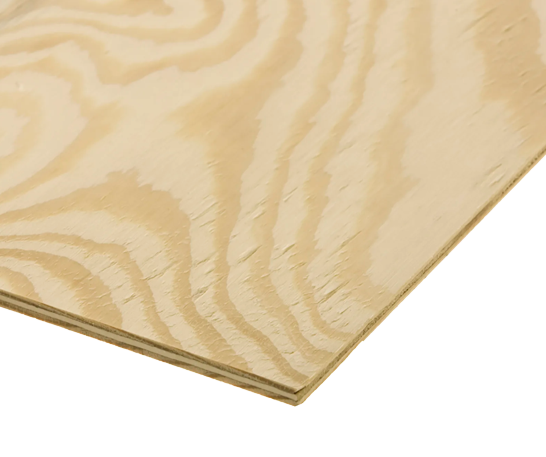
Infused with chemicals to render it resistant to decay and insects, treated plywood is a common choice for outdoor projects, including decks and fences. The treatment process fortifies it and enables it to withstand harsh weather conditions.
11. Aircraft Plywood

Specifically designed for use in aircraft construction, aircraft plywood is a high-strength option. It is crafted from a combination of hardwoods or ultra-thin softwood veneers, ensuring a lightweight build.
12. Decorative Plywood

Ideal for projects where appearance matters. It is often used for interior design elements like wall paneling and furniture. It is available in various finishes, such as hardwood veneer, exotic wood species, or even unique patterns and textures.
Which is the Best Plywood Type for Woodworking?
It encompasses various types, each having unique characteristics and applications. Ensuring the durability and performance of your project relies on the essential task of selecting the right plywood. By comprehending the distinctions among these types, you can make informed decisions and attain optimal results for your construction and woodworking endeavors.
Whether your project pertains to structural support, interior design, or outdoor applications, there exists a plywood tailored to your specific needs. For a wealth of additional information on lumber, woodworking, and decking, don’t hesitate to explore the Timber Explore platform.

